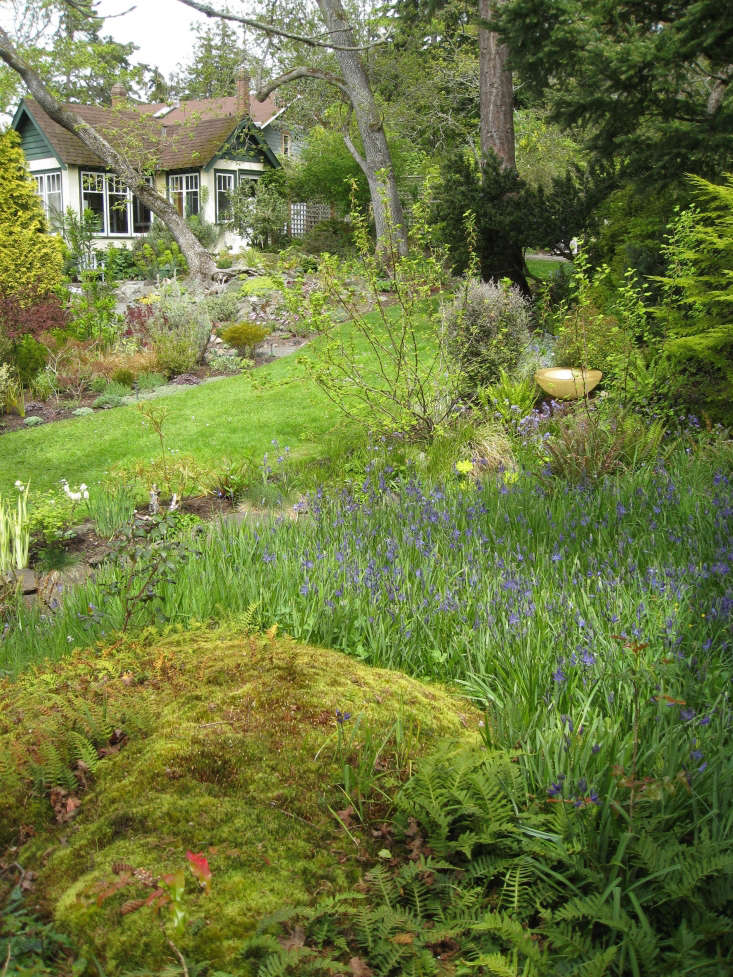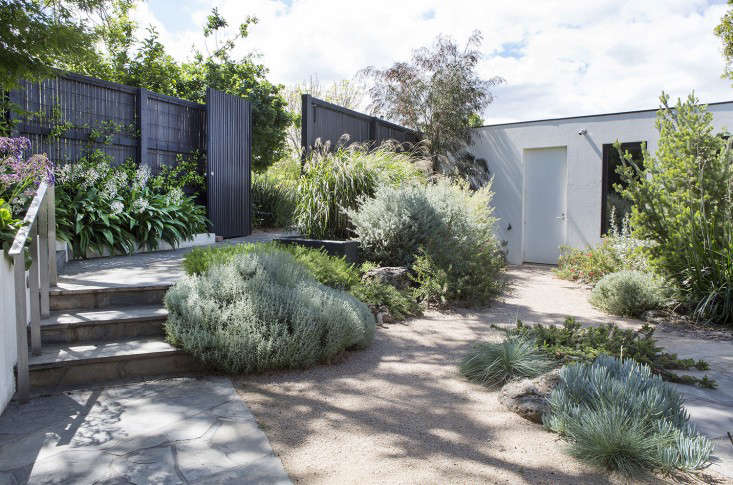The garden of Graham Smyth in Victoria, British Columbia faces southwest and drains fast, sloping at 20 degrees over half an acre. Tangled in Himalayan blackberry and English ivy in 2001, Smyth first restored the native Garry oak landscape and then built carefully upon it to create an exceptional garden. And exceptions really are the rule here. From rocky outcroppings studded with succulents to semitropical areas, Smyth’s “foliage first”approach has redefined the Canadian garden.
Photography by Christin Geall except where noted.

Smyth’s plant choices are guided three simple principles: Foliage first, site second, flowers last. Adhering to these rules ensures the garden performs year-round.
With a Pacific climate that pours rain in winter and yet endures summer drought, Smyth’s choice to use hardy semitropical plants and succulents is site specific. If there’s summer sun and drainage, he indulges in Aeoniums and Echeverias. Where the soil deepens in pockets of level ground, he has planted exotic shrubs and trees from the southern hemisphere.

Smyth’s success can be attributed to his willingness to take risks: not solely with design, but also with plants. Smyth grows plants from the temperate regions of Chile, New Zealand, Australia, and South Africa.

“I grow backups,” he says. “Try a plant in the ground and hold another in a pot, just in case.” Through that method of trialling new varieties, Smyth claims he’s growing plants “up to zone 9.”




A self-taught gardener, Smyth sources his exotics from horticultural societies, specialty nurseries, and plant groups. “I do the research. And I’m not afraid to start things from seed.”
Such experimentation requires patience, passion, and education. Smyth has gained inspiration from the The National Botanic Gardens in Dublin; Abbotsbury Subtropical Gardens in Dorset, England; Cistus Nursery in Oregon, and Dan Hinkley, the horticulturalist behind Heronswood in Washington state.


A true plantsman, Smyth estimates he’s growing hundreds of different species on his property. “I do try to make combinations work so there’s some coherent flow,” he says. “But it’s a lot of one-of-this-and-one-of-that.”
Zone-defying and genre defining, the garden of Graham Smyth is about seeing possibilities. It’s also a beautiful testament to hope.
For more of our favorite gardens in Canada, see:
- Garden Visit: At Home with Canada’s Favorite Garden Writer.
- 10 Garden Ideas to Steal from Canada.
- Steal This Look: Cinderblock Chic in Toronto.








Have a Question or Comment About This Post?
Join the conversation